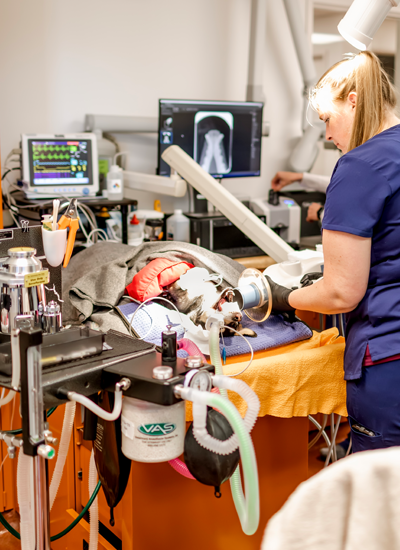Endodontics
Fractured teeth are very common problems seen in dogs, and it is usually caused by trauma from chewing on hard objects. There are little to no regulations governing what is appropriate to market as a chew toy for animals. Consequently, the marketplace is filled with inappropriate chew toys and misinformation. Our ‘rule of thumb’ is: if it is too hard for you to bend, flex or break by hand, then it is too hard for your dog to chew.
Fractured teeth should be evaluated immediately, and if there is any sign of pulp exposure, then treatment is required. Watching and waiting the fractured tooth is not an appropriate course of action.
Often facial swelling is the first symptom noted by owners and can often be confused with an insect bite. Antibiotics will help reduce the swelling, but is only temporary. A definitive treatment of extracting the tooth or root canal therapy needs to be performed.
Root canal therapy can be used to save most fractured and/or abscessed teeth. This process is similar to treatment with humans. The root pulp and infection within the root canal are removed, and the canal is sealed to prevent reinfection. Metal crown restorations are used to protect the treated tooth from further fracture.
Crown reduction and pulp therapy are another aspect of endodontics. This treatment is utilized in cases of malocclusion, and it is a successful method that shortens the cusp height of the teeth in order to maintain their vitality.


